
Casualty Trends in Great Britain
The number of cyclist deaths in Great Britain (England, Scotland and Wales) has been falling almost continuously since 1934, so it is to be expected that, regardless of the use of helmets by cyclists, this trend would continue. Cycle helmets have only become common in Great Britain since about 1993. Fatality trends since that time have shown no additional improvement compared with the situation previously.
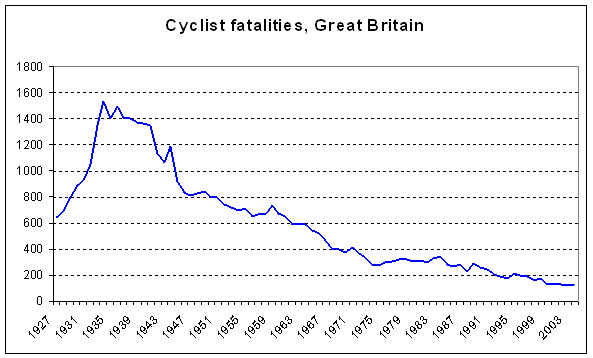
Considering only those deaths involving head injury, these too have fallen steadily since well before helmets were in use:
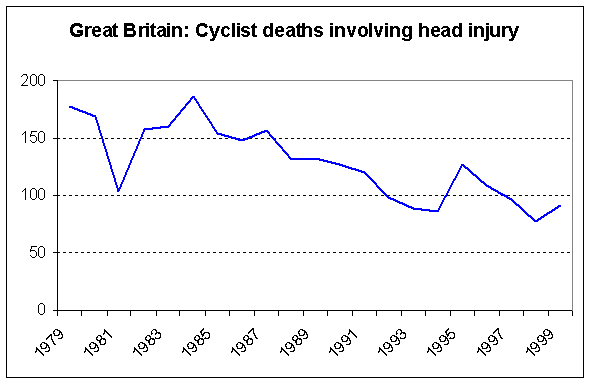
The graph above shows that not only has there been no improvement in trends since the early 1990s, but during a period of significant helmet take-up (1994 - 1996), deaths due to head injury increased.
The above statistics take no account of levels of cycle use. These have declined dramatically since fatalities started to decline in 1934, but from 1990 to 2004 there was very little change in cycling overall.
A fairer way to assess trends in casualties independently of the amount of cycling is to look at the severity ratio: the proportion of casualties that involve fatal or serious injury. The graph below shows how the severity ratio has changed for cyclists, and compares this with the corresponding change for pedestrians. Historically cyclist and pedestrian casualties have tracked closely though with pedestrians sustaining more serious injuries. The inclusion of this comparison is useful in case some mitigating factor is cancelling benefits achieved through increased helmet use.
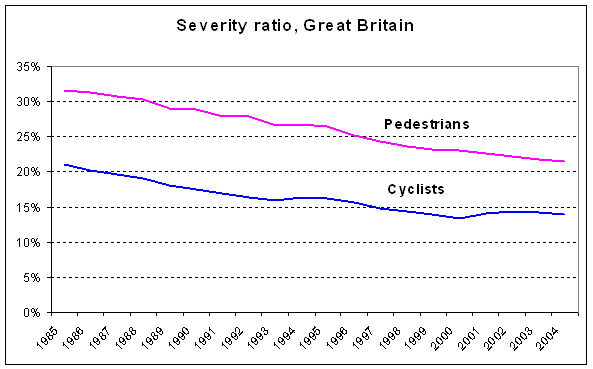
Again, it is not possible to detect any improvement in the severity of cyclist casualties that might be attributed to helmet use, which had risen to 16% by 1996 and 28% in 2004 (on busy roads), but to over 50% in some cities, including London. ( However, helmet use is much lower on less busy roads.)
Moreover, since the early 1990s, the severity of cyclist injuries has declined less than for pedestrians. Since 1993 there have been two periods when the severity of cyclist injuries increased, whilst pedestrian injuries continued to become less serious.
One of the periods when the severity of cyclist injuries increased was 1994 - 1995 as shown more clearly in the expanded graph below of fatalities since 1985.
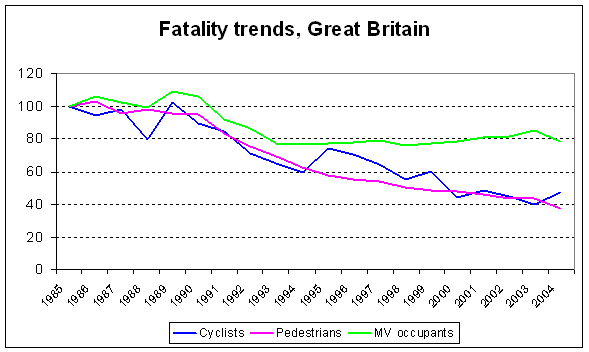
After moving in harmony with the trends for pedestrians and motor vehicle occupants for some years, there was an abrupt jump of 24% in cyclist deaths which was sustained for several years before fading at the end of the decade. Since 1936 there has been only one other year with a larger annual increase in cyclist deaths (1989 - 1990, 29%) and on that occasion the trend returned to normal the following year.
If helmets were 'saving lives', one would not expect such a sudden and substantial jump in cyclist deaths just in the very years when helmet use was becoming common. Moreover, one would not expect such an increase to apply only to cyclists and not also to any other road user.
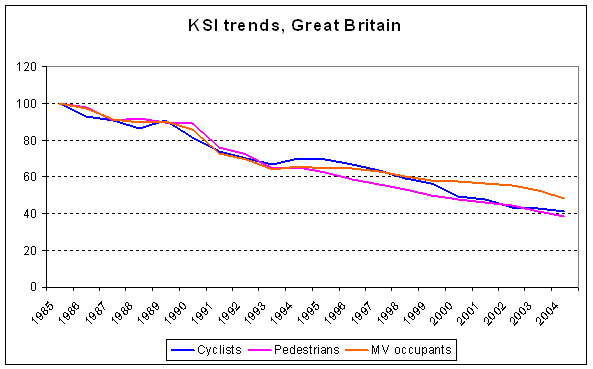
The graph above of KSI (killed and seriously injured) casualties since 1985 also shows an increase in cyclist casualties only in 1994 - 1995, although of smaller order (10%) than for fatalities alone. Despite the use of helmets, cyclists have fared less well than pedestrians in serious injury reduction and only a little better than the occupants of motor vehicles.
Sources:
- Great Britain casualty statistics: Department for Transport, London.
- Deaths involving head injury: National Statistician, using ICD9 codes N800-4, N850-4, N870-3.
- Helmet use statistics: Transport Research Laboratory.
See also






